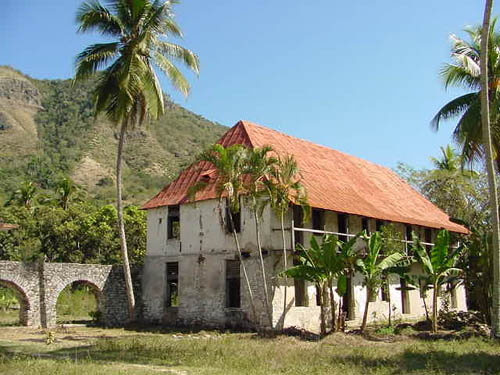Centuries ago, when sugar was not the most important production of Cuba, the island experienced a boom in the planting and elaboration of the coffee. After the Brazilian competition arrived, the French who were behind the businesses were expelled and the cultivation of coffee became something totally secondary.
At that time, almost all the coffee plantations were of French origin since their owners had fled from the governments of neighboring Haiti or the state of Louisiana. These people brought their culture, Its refined customs and ideology characteristic of Napoleonic France, that is why we see all over the island manor houses with French paintings and furniture, libraries and halls where Cuban high society is related to coffee, tobacco and sugar.
It is worth saying that the first Franco-Haitian coffee plantations in Casa Particular in Santiago de Cuba have already been declared Heritage by UNESCO (2000), as they have a high historical value. They are constructions dating from the seventeenth and early eighteenth centuries, erected by these French and Haitians who fled Haiti after the 1789 revolution and bought these lands at a very low cost. These sites are today very important at an archaeological level since they are a sample of both architecture as well as different techniques in the treatment of coffee: drying, threshing or desiccation and even in the construction of aqueducts, roads or ovens.
The Cuban coffee belt is centered in the Santiago de Cuba province and extends to the Gran Piedra, El Cobre, Dos Palmas, Contramaestre and Guantánamo. We can get there and see, for example, the most famous ruins, those of the Santa Sofía farm, Kentucky and La Isabélica. This last room is the one that is best preserved and even has an ethnographic museum and a legend of love between the French owner and a slave.


The article is good but it does not talk about the French coffee plantations in Baracoa, more than 20 coffee plantations in Brazil and many more.
Today in 2014 the Office of the Curator of the City is carrying out a restoration to the agro-industrial farm Fratenidad, this is one of the greatest surviving examples of this type of construction, since its stately home, the slave barracks, the aqueduct remains , the bakery, and other buildings that made up its batey. I recommend that everyone visit the site one day, it is a beautiful landscape that tells the story of some French people who promoted and commercialized the cultivation of coffee in Cuba.